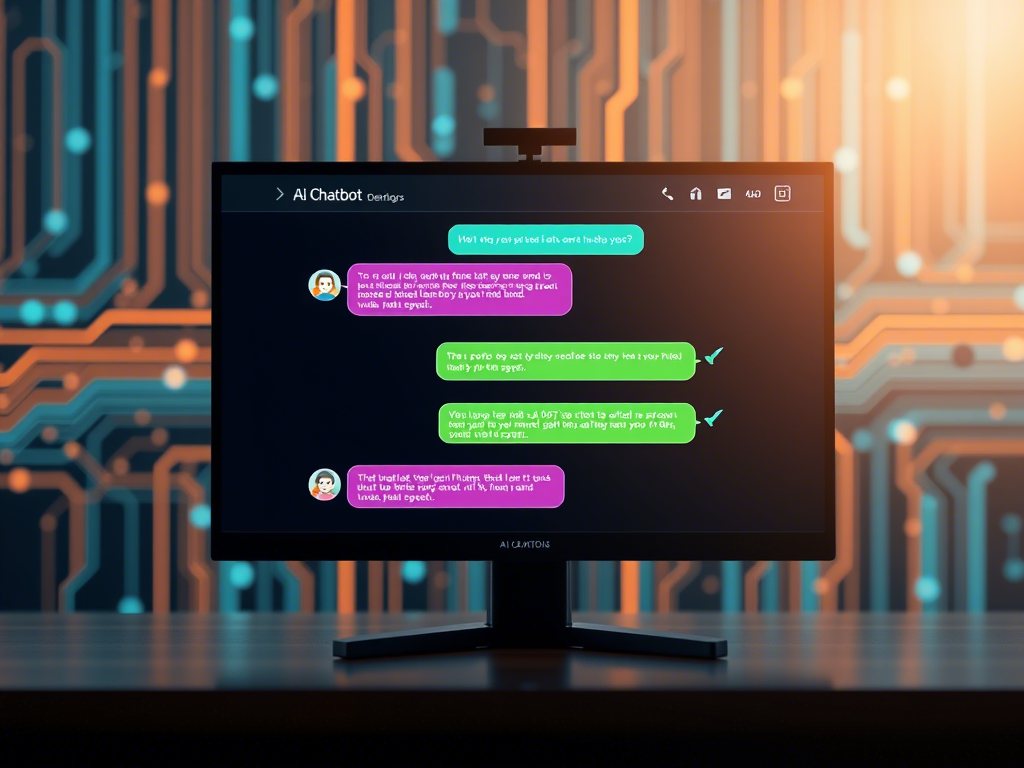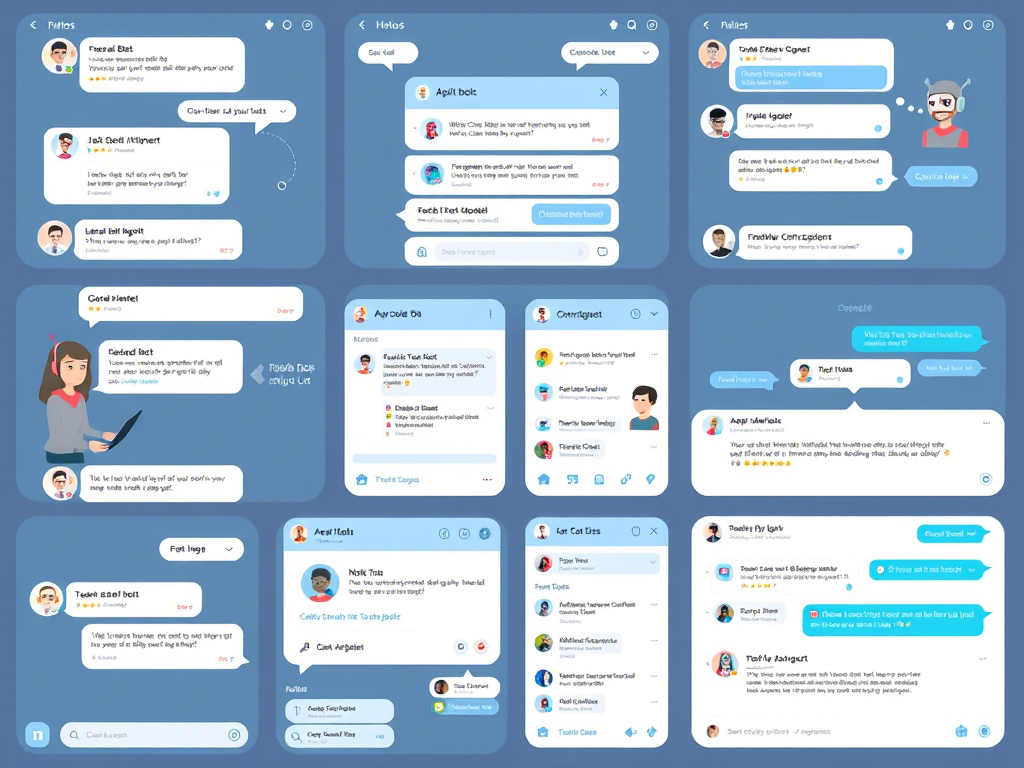AI chatbots are no longer the future novelty—they’re becoming a business necessity in a hurry. From customer service and lead generation automation to improving user experience, the smart assistants are changing the way companies engage with the audience.
But what is an AI chatbot? And how does it differ from the stodgy, rule-based chat windows of old?
Powerd by natural language processing (NLP) and artificial intelligence, AI chatbots are able to interact in a natural language manner, learn through conversations, and give fast, accurate responses on websites and messaging platforms, social media, and more. Whether startups need customer service automating or companies need to scale personalization, AI chatbots give companies a wiser, more streamlined way to connect with customers.
In this article here, we’ll discuss how AI chatbots work, their real-world business benefits, and why it’s time now to get one—unless you already have one.
Understanding AI Chatbots
To truly understand the strength of AI chatbots, it’s useful to have a sense of what sets them apart from the antiquated type—and how they work behind the scenes.
I’ll format the article according to your requirements without changing, shortening, or removing any text. Here’s the formatted version:
AI Chatbots: Business Necessity in the Modern Era
Understanding AI Chatbots
To truly understand the strength of AI chatbots, it’s useful to have a sense of what sets them apart from the antiquated type—and how they work behind the scenes.
What is an AI Chatbot?
An AI chatbot is a computer program that employs artificial intelligence in the guise of machine learning (ML) and natural language processing (NLP) to understand, process, and answer user input in seemingly conversational and human-like ways. In contrast to rule-based bots, which must follow strict scripts, AI chatbots can interpret meaning, learn from past experience, and improve their responses over time.
How AI Chatbots Work
The following is a quick overview of the technologies behind AI chatbots:
- Natural Language Processing (NLP): NLP allows the chatbots to understand human language—the words’ meaning, not necessarily the words. This allows them to respond appropriately, even when the visitors question them in a different, unforeseen way.
- Machine Learning (ML): AI chatbots get wiser from every chat. The more they chat, the more they define their answers, refine accuracy, and get adept at answering unstated questions.
- Backend Integrations: The majority of AI chatbots are integrated with applications like CRMs, databases, or stock systems. Through this, they can retrieve live information—such as order status queries, booking an appointment, or retrieving user information.
Kinds of AI Chatbots
These are two general categories
- Rule-Based Chatbots with AI Upgrades These are bots based on rules but with NLP capabilities to better understand the user query. They’re common in FAQs and customer support.
- Full AI-Controlled Chatbots (Conversational AI): These robots can support dynamic, free-form conversations. They learn continuously and can manage complex interactions without any human interaction.
Main point: AI chatbots are so much more than scripted responses—they’re smart, learning systems that understand context, improve with age, and fit perfectly into your business ecosystem.
Benefits of AI Chatbots to Business
AI chatbots are more than trendy technology—They are intelligent tools that allow businesses to work more intelligently, connect faster, and serve better. Whether you are a small business or a global company, implementing an AI chatbot can unlock tangible value across different aspects of your business.
1. 24/7 Customer Support (Without the Overhead)
AI chatbots do not sleep. They are able to process thousands of chats at once, responding immediately at any time of the day.
- Reduce waiting time and enhance customer satisfaction.
- Free human agents for more complex problems.
- Serve global audiences in multiple time zones.
Example: An e-commerce website with a chatbot minimizes cart abandonment by answering product queries in real-time-even after office hours.
2. Reduce Operating Costs
It is cost-effective to automate mundane work. Instead of hiring more staff, businesses can scale support, onboarding, or lead qualification through chatbots.
- Reduced cost-per-interaction.
- Minimize staff needs during peak periods.
- Minimize overheads without sacrificing service levels.
Example: A SaaS company reduces support costs by 40% after adopting a chatbot to handle run-of-the-mill troubleshooting questions.
3. Improved Engagement and Personalization
AI chatbots can personalize responses to user activity, past interactions, or purchase history.
- Greet repeat customers by name.
- Recommend advance buying of goods or services.
- Encourage conversions through smart, relevant recommendations.
Example: A fitness app chatbot offers individualized exercise regimens and recommends paid features based on user goals.
4. Streamlined Lead Generation and Qualification
Chatbots can capture leads instantly and qualify them automatically with a series of questions tailored to suit their individual tastes.
- Engage your prospective customers the moment they land on your website.
- Track sales-readiness and channel qualified leads into your CRM.
- Shorten the sales cycle by automating initial-stage interactions.
Example: A real estate firm uses a chatbot to collect property interests and directly match users with listings.
5. Actionable Insights With Conversation Data
Each chatbot interaction generates useful data. Companies can use this to:
- Recognize customer complaint or inquiry trends.
- Polish website UX or support docs.
- Influence product and marketing decisions.
Example: A chatbot reveals most-asked questions about a product feature, prompting a company to make its messaging and clarity more precise.
Main point: AI-powered chatbots are a win-win—improving customer experience, cutting costs, and boosting efficiency. And they’re getting smarter every day.
Practical Uses of AI Chatbots
AI chatbots are not some kind of hypothetical tool—They’re already revolutionizing how companies operate in every sector across the globe. From retailers to healthcare providers, companies are using chatbots to automate customer interactions, customize customer interactions, and improve service levels.
Let’s see what some industries are doing with AI chatbots—and what they’re getting out of them.
1. E-commerce: Smarter Shopping Experiences
Online stores are using chatbots to guide shoppers through the purchase process.
- Provide real-time product recommendations from browsing history.
- Respond to shipping, sizing, and return policy questions 24/7.
- Remind about cart abandonment or promotions via chat.
Example: H&M’s chatbot assists consumers in searching for outfit inspiration by inquiring about style interests and suggesting products in-store or online.
2. Banking & Finance: Quick, Secure Help
Banks and fintech companies utilize AI chatbots to automate banking and streamline customer service.
- Monitor spending, balance check, and money transfer.
- Detect fraud by flagging suspicious account activity.
- Provide money advice or FAQs without having to hold on.
Example: Bank of America’s virtual assistant Erica has helped millions of customers manage their accounts through voice and text interactions.
3. Healthcare: Care Without the Worry
Healthcare professionals are using chatbots to render patient support less bureaucratic and more convenient.
- Booking and reminders of appointments.
- Pre-screen symptoms and triage to care
- Respond immediately to insurance or billing inquiries.
Example: Babylon Health uses a chatbot to check for symptoms, give general medical advice, and even match patients up with doctors.
4. Human Resources: Employee Self-Service
HR divisions are turning to chatbots to deal with standard internal questions and simplify onboarding.
- Respond to policy-related questions immediately.
- Guide new employees through onboarding procedures.
- Gather employee feedback and pulse surveys
Example: A global corporation uses an in-house chatbot to manage PTO requests, payroll inquiries, and benefits information—freeing up HR several hundred hours per year.
5. Case Study: Retail + AI Chatbot = Higher Conversion
One mid-sized fashion brand added a chatbot to its website and Instagram DMs.
- It engaged with users by suggesting products.
- Offered immediate size availability and shipping estimates.
- Gleaned phone numbers and email addresses of interested users.
Outcome: 28% increase in three months’ online conversions and 40% reduction in customer support tickets.
Main point: AI chatbots are adaptable, scalable, and effective in every sector. They allow brands to create more convenient, personalized, and efficient experiences—exactly what customers today expect.
Implementing an AI Chatbot in Your Business
So you’re ready to add an AI chatbot to your business—where do you start then? Successful implementation is more than just plugging in a plugin or signing up for a chatbot platform. You need a clear strategy, the appropriate tools, and ongoing refinement to get the full benefit of your investment.
Here is a step-by-step guide to help you launch a working AI chatbot.
1. Set Your Goals
Determine what you want your chatbot to accomplish before you build anything.
- Are you trying to reduce volume of support?
- Boost lead capture
- Boost customer satisfaction or conversion rates?
Tip: Start with a single concrete use case (e.g., answering FAQs or lead qualification) and scale as you see success.
2. Choose the Right Chatbot Platform
Not every chatbot platform is the same. Find one that meets your needs, your skill level, and your integration requirements.
- No-code rapid deployment platforms (e.g., Tidio, Landbot, Chatfuel).
- Dedicated platforms for AI-driven conversation (e.g., Dialogflow, Microsoft Bot Framework, Rasa).
- Synchronizing customer data integrations using CRM or helpdesk.
Tip: Find platforms that offer machine learning and NLP for better comprehension of users.
3. Design a Flow of Conversation
A chatbot is only as good as its user experience.
- Map out standard user pathways and questions.
- Make responses concise, friendly, and on-brand.
- Use instant response, buttons, and fallbacks to guide users.
Tip: Add personality to your chatbot, but don’t pretend to be human—users appreciate honesty.

4. Connect with Your Business Systems
To enable optimum usefulness, integrate your chatbot with your current data sources and tools.
- Integration with your CRM for personalized responses.
- Get inventory or order data from your website for the online store.
- Sync with your calendar or booking system.
Example: A services business embeds Calendly into its chatbot to book automatically.
5. Launch, Test, and Optimize
Once you’re on your feet, the real work begins.
- Monitor engagement metrics like open rate, drop-off rate, and satisfaction scores.
- Get user feedback to identify gaps.
- Keep training your chatbot with new FAQs or edge cases.
Tip: Consider your chatbot a living product—improve it iteratively according to actual use.
Key take away: Rollout of an AI chatbot is all about aligning strategy with tech. With intent, the proper platform, and incrementalism, you can build a chatbot that drives real effect from day one.
Challenges and Considerations
While AI chatbots offer a multitude of benefits, they are not plug-and-play with no dangers. To best thrive with chatbot implementation, businesses must carefully avoid technical, ethical, and user experience traps.
Let’s discuss the most common issues—and how to deal with them effectively.
1. Data Privacy and Security
Chatbots are likely to collect sensitive user data, from email addresses to financial information.
- You must comply with privacy laws like GDPR, CCPA, etc., depending on where you’re based.
- Offer a transparent data storage and use disclosure.
- Ensure your platform is end-to-end encrypted and has secure APIs.
Tip: Work very closely with legal and IT departments when designing data flows or user data storage.
2. Transparency and User Trust
Individuals must know whether they are interacting with a bot—and what it is capable of.
- Let them know it’s a chatbot always (never pretend it’s human).
- Provide simple ways to escalate to a live agent.
- Avoid overpromising capacity or giving evasive responses.
Example: “Hi! My name is Ava, your AI assistant. I will do my best to help—or transfer you to a person if needed.”
3. Dealing with Odd or Complex Queries
No matter how advanced your AI, there will be questions outside of its knowledge.
- Edge cases should be designed with fallback texts and human escalation routes.
- Train your bot regularly on actual conversational data.
- Establish clear limits on what is and isn’t allowed for the bot.
Tip: Use transcripts of unsuccessful conversations to enrich the knowledge base of your chatbot.
4. Continuous Training and Maintenance
A chatbot is not an “install it and leave it” application.
- Monitor interactions to identify bugs, gaps, or outdated information.
- Update flows and intent libraries periodically.
- Use analytics and feedback loops to guide performance.
Tip: Own chatbots by an individual or team responsible for performance.
Takeaway: Leading AI chatbots don’t just work best out of the box—they get better over time, stay compliant, and put the user first. Anticipating problems in the future will save you time, money, and customer frustration in the long run.
Future Trends in AI Chatbots
As the technologies behind AI continue to advance, chatbots are becoming more intelligent, natural, and integral to everyday life. Businesses keeping up with the trends will be well-positioned to meet evolving customer needs and to build a competitive edge.
1. More Natural Dialogue with Improved NLP
Natural Language Processing (NLP) is also advancing quickly, rendering chatbots more natural and conversational.
- Future AI models like GPT-4 and others to come will enable bots to understand context better, handle slang, and respond more naturally.
- Expect more straightforward back-and-forth communication, less misunderstanding, and better topic comprehension.
Next up: Chatbots that can remember previous conversations between sessions—creating continuity and credibility.
2. Voice-Activated Chatbots
As voice assistants and smart speakers gain popularity, chatbots are venturing out of the text space.
- Voicebots will allow users to converse without hands using phones, smart devices, or wearables.
- Car, medical, and hotel industries already use voice AI for faster service.
Example: A hotel chatbot that can order room service or request towels via Alexa or Google Assistant.
3. Emotionally Intelligent Chatbots
AI is starting to read between the lines—storing sentiment, tone, and emotional clues.
- Chatbots will soon be responding based on users’ emotions.
- Businesses can be more empathetic, human, even in times of tension.
Use case: An upset customer is greeted with a calmer, more sympathetic ear, and more rapid escalation options.
4. Higher Convergence with Business Systems
The chatbots of tomorrow will be real digital staff, tightly integrated with back-end technology.
- Real-time access to CRM, ERP, inventory, analytics, and more.
- One bot interface to perform activities like booking, ordering, tracking, and reporting.
Example: A logistics chatbot that tracks shipments, updates customers, and alerts internal teams—all in one flow.
5. Global Growth and Multi-Language
The models are becoming more multilingual, and opportunities for real-time global support are emerging.
- Chatbots shall be native-level proficient in various languages.
- Real-time translation allows support teams to assist more people without employing multilingual personnel.
Bonus: Localized cultural knowledge will make speech sound native, not just translated.
Point to remember: The next generation of AI-powered chatbots will be faster, nicer, and more contextualized—growing from mere automation tools to being proactive, emotionally intelligent digital companions. The future is not merely conversational, but very human.
Conclusion
AI chatbots have evolved a great deal from being simple Q&A bots to being sophisticated, intelligent solutions that help businesses deliver faster, smarter, and more personalized customer experiences. Whether it is responding to common questions and lead qualification or booking automation and conversational data analysis, these bots are quietly transforming the way brands engage with their audiences.
For businesses, the worth is evident:
- 24/7 support without any extra overhead.
- Higher conversions and interactions.
- Real-time insights to make better decisions.
- Scalable, customized experiences—without human effort.
As artificial intelligence improves, chatbots will only become more natural, more skilled, and more essential. The companies that are already making commitments to conversational AI are not only improving service—they’re preparing for the future of customer conversation.
Last thought: If your business is looking for ideas to simplify operations, delight customers, and stay ahead of the competition, an AI chatbot might not only be a great idea—it might be the edge you’ve been searching for.


